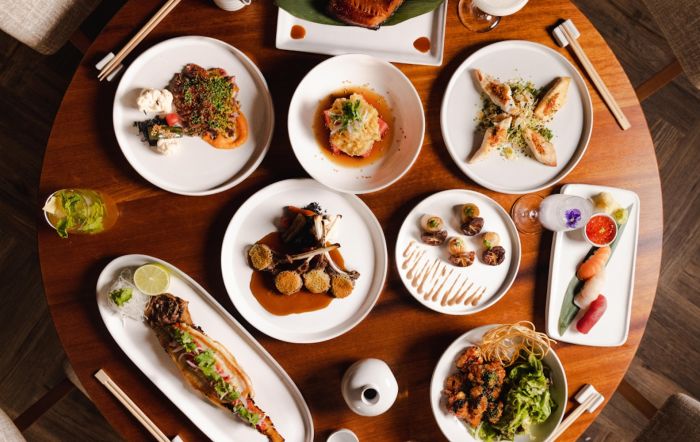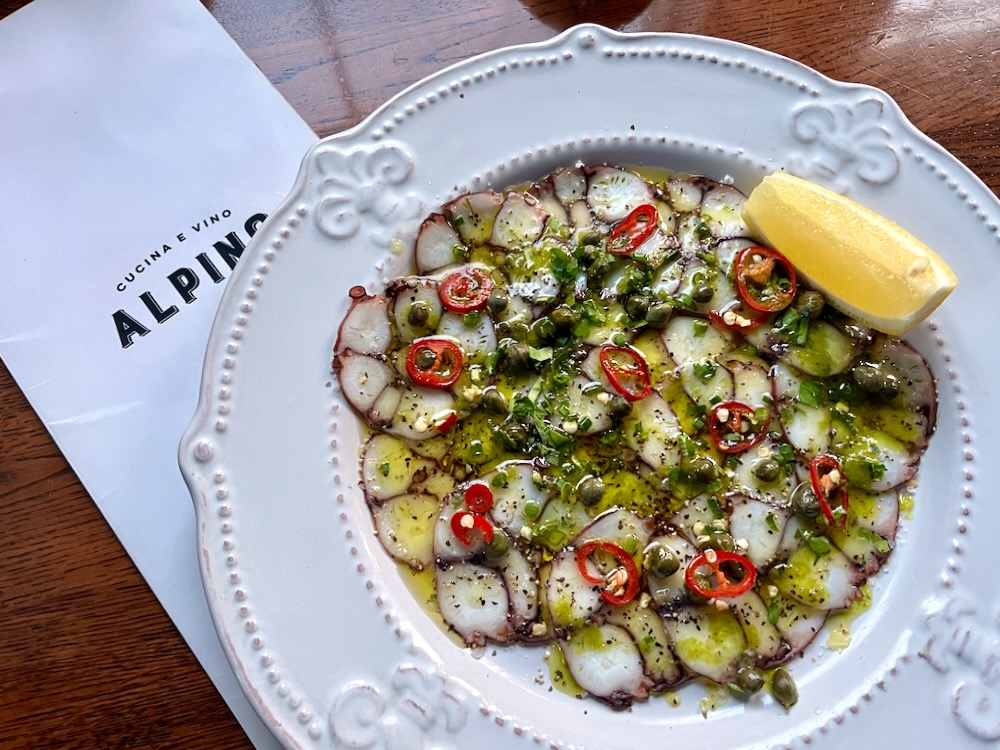
There was a short period in my life when I was blessed with a situational study of Japanese cuisine that lasted just long enough to shed light on a beloved Japanese culinary tradition: Kaiseki and Kaiseki Ryôri. The multi-course traditional meal is simply one of food’s most extraordinary displays of culinary prowess.
 The story of Kaiseki, (meaning “stone in stomach,”) comes from the 16th century when Buddhist priests placed hot stones (seki’s) in the front pocket of their kimono sashes (kai) to keep their bellies warm and to stave hunger during morning prayer and fasting. A light meal was then served after the tea ceremony (chanoyu), the light meal: Kaiseki.
The story of Kaiseki, (meaning “stone in stomach,”) comes from the 16th century when Buddhist priests placed hot stones (seki’s) in the front pocket of their kimono sashes (kai) to keep their bellies warm and to stave hunger during morning prayer and fasting. A light meal was then served after the tea ceremony (chanoyu), the light meal: Kaiseki.
Today, Kaiseki is a cult foodie’s dream – fung shui on a plate. The methods in preparing this eleven (give or take) course meal is to produce complete harmony on the plate between textures, flavors, and appearance. Adapted over time as a special occasion event, each course provides a different flavor profile than the last, and is meant to be enjoyed slowly.
To watch an expert chef produce this feast is a feast...for the eyes, the palate and the imagination. There are typically five colors on every plate to lend beauty and balance along with edible garnishes such as flowers and fish heads. The dishes are all light and delicate, so it is possible to get through the meal without exploding...remember this was once considered “a light meal.”
 The first three courses (usually three small appetizers) may include silky goma (sesame) tofu in dashi broth, or nutrient-rich nori (pickled vegetables.) Next, a soup dish composed of maybe seafood (snapper, octopus) and seasonal Japanese vegetables (daikon, scallion.) Now, you are on to a plate of classic sashimi...raw fish, sometimes cut directly from a live fish and served moments later. The main course: the Hassun, translating as “a variety of flavors.” The Hassun, plated atop traditional silk sashes, is the grand event featuring various components; fishes, vegetables, flowers, and perhaps a slow-cooked Kyoto egg… divine. The Hassun may just be the most complicatedly beautiful plate you have ever seen.
The first three courses (usually three small appetizers) may include silky goma (sesame) tofu in dashi broth, or nutrient-rich nori (pickled vegetables.) Next, a soup dish composed of maybe seafood (snapper, octopus) and seasonal Japanese vegetables (daikon, scallion.) Now, you are on to a plate of classic sashimi...raw fish, sometimes cut directly from a live fish and served moments later. The main course: the Hassun, translating as “a variety of flavors.” The Hassun, plated atop traditional silk sashes, is the grand event featuring various components; fishes, vegetables, flowers, and perhaps a slow-cooked Kyoto egg… divine. The Hassun may just be the most complicatedly beautiful plate you have ever seen.
After the main event the wind down begins as you become more satiated and enamored with the splendor that is Kaiseki. The next three courses: a slow cooked dish, often meat; a seasonal rice dish (“gohan,”) maybe with Suppon (turtle); and then to a small bowl of rice and miso soup. Full? You are not finished. Now dessert: Hojicha tea and a confection perhaps containing mocha (red bean paste) or green tea ice cream. Finish with fruit jelly (fruit in gelatin,) a final palate cleanser. You are now done for the evening; you must go home and reflect… because nothing can follow a dinner so fine. Just fall to sleep savoring your experience with Kaiseki.
Kyoto and Ryokan are cities in Japan both well known for traditional Kaiseki. Fortunately, the experience is now making its way west to small restaurants across America courtesy of Japanese migrants.
Kaiseki Courses:
- Sakizuke: Several appetizers
- Wanmono: “A lidded dish.” Usually composed of clear fish broth, fish and vegetables
- Mukozuke: Sashimi – a seasonal selection of sliced raw fish
- Yakimono: The Hassun – “a Variety of Flavors.” The main course
- Takiawase: Seasonal vegetables with tofu, fish, or meat. All items are simmered separately then plated together
- Agemono: Tempura style vegetables and shellfish. This is a modern addition is rarely found in classic Kaiseki
- Mushimono: Steamed seasonal ingredients like chawan-mushi
- Tome-zakana: A small dish, palate cleanser, often vegetables in vinegar
- Gohan: A rice dish with meat, fish, and sometimes even turtle
- Tome-wan: Miso soup, always served with rice
- Ko-no-mono: Seasonal pickled vegetables (Traditional)
- Mizu-gashi: A light, seasonal desert, usually ice cream, Japanese pastry or confection or cake, followed by “fruit jelly”














